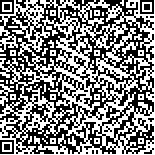| 摘要: |
| 目的 农村贫困程度的变化是一个动态变化的过程,动态、客观地监测农村贫困的时空变化对国家扶贫工作十分重要。方法 文章利用DOSP/OLS夜光数据集构建的平均灯光指数ALI(Average light index,ALI)与社会经济数据构建的综合贫困指数IPI(Integrated Poerty Index,IPI)建立关系,进而估算2003—2018年贵州省县(区)域间综合贫困指数,分析农村贫困的时空格局演变。结果 (1)ALI与IPI建立模型估算的IPI与真实的IPI拟合程度较好,R2超过了0.86,具有一定的准确性和科学性;(2)贵州省各县(区)域IPI指数的变异系数和泰尔指数在2003—2018年两者都有所增长,增长幅度分别为19.21%和2.38%,表明农村贫困度差异在逐渐增大。但贫困程度极高的县(区)域呈下降趋势,由2003年的65个减少到2018年的37个;(3)标准差椭圆分析表明贵州农村贫困程度整体呈现“东北—西南”的空间分布格局,椭圆覆盖面积和贫困化重心变化不大;(4)探索性空间数据分析显示,贵州各县(区)域农村贫困程度表现出显著的正相关,并存在较强的空间聚集现象;(5)由空间变差函数分析可知,贵州农村的贫困程度表现出较强烈的空间关联性和组织性,贫困程度的结构空间分异引起的贫困程度空间关联作用范围呈缩小的趋势,且由随机性因素引起的空间异质性呈下降趋势。结论 夜间灯光遥感能一定程度上反映贵州的县(区)域农村贫困化程度,能够较客观地反映贫困变化。2003—2018年贵州省农村贫困程度高的区域持续减少,减贫效果显著。 |
| 关键词: 夜光遥感 贫困指数 时空格局 农村 贵州省 |
| DOI:10.7621/cjarrp.1005-9121.20220516 |
| 分类号:K902 |
| 基金项目:国家自然科学基金项目“喀斯特环境下的地物光谱与典型地物识别研究”(61540072) |
|
| ANALYSIS ON THE SPATIAL AND TEMPORAL CHANGES OF COUNTY RURAL POVERTY IN GUIZHOU PROVINCE |
|
Ruan Ou1,2, Liu Suihua1,2, Chen Fang1,2, Luo Jie1,2, Hu Haitao1,2
|
|
1.School of Geography and Environmental Science, Guizhou Normal University, Guiyang 550025,Guizhou, China;2.Guizhou Key Laboratory of Mountainous Resources and Environment Remote Sensin, Guiyang 550025,Guizhou, China
|
| Abstract: |
| The change of rural poverty level is a process of dynamic change. Dynamic and objective monitoring of the temporal and spatial changes of rural poverty is very important to the national poverty alleviation work. A relationship between the average light index (ALI) constructed by the DOSP/OLS luminous data set and the Integrated Poverty Index (IPI) constructed by socioeconomic data was established, and the comprehensive poverty index between 2003 and 2018 in the county (district) area of Guizhou province was estimated, then the evolution of the temporal and spatial patterns of rural poverty was analyzed. The results were indicated as follows. (1) The IPI estimated by the ALI and IPI model fitted well with the real IPI, with R2 exceeding 0.86, which was accurate and scientific. (2) The coefficient of variation of the index of IPI index in county (district) of Guizhou province and the Theil index had both increased from 2003 to 2018, with growth rates of 19.21% and 2.38% respectively, indicating that the difference in rural poverty levels was gradually increasing. However, the number of counties (districts) with extremely high levels of poverty decreased from 65 in 2003 to 37 in 2018. (3) The standard deviation ellipse analysis showed that the poverty level in Guizhou rural areas as a whole presented a spatial distribution pattern of "Northeast-Southwest", with little change in the area covered by the ellipse and the center of poverty.(4) Exploratory spatial data analysis showed that there was a significant positive correlation in rural areas, and there was a strong spatial clustering phenomenon.(5) From the analysis of the spatial variability function, the poverty degree in rural Guizhou showed a strong spatial correlation and organization. And the spatial correlation of the poverty degree caused by the structural spatial differentiation of the poverty degree showed a shrinking trend. The spatial heterogeneity caused by random factors showed a downward trend. In summary, the remote sensing of night lights can reflect the degree of rural poverty in the county (district) area of Guizhou to a certain extent, and can more objectively reflect the changes in poverty. From 2003 to 2018, the areas with high levels of rural poverty in Guizhou province continued to decrease, and the effect of poverty reduction was significant. |
| Key words: remote sensing of night lights poverty index spatio-temporal pattern rural area Guizhou |

